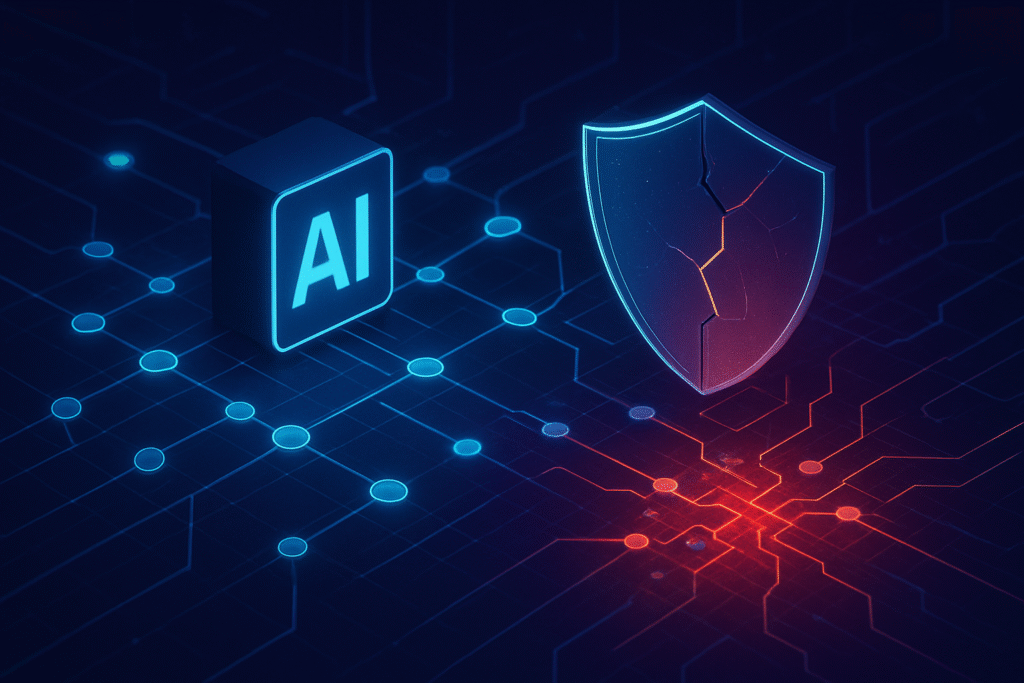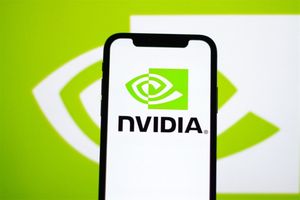
The cybersecurity landscape for artificial intelligence platforms has been significantly shaken by the disclosure of a critical vulnerability in Red Hat (NYSE: RHT) OpenShift AI. Tracked as CVE-2025-10725, this flaw, detailed in an advisory issued on October 1, 2025, allows for privilege escalation that can lead to a complete compromise of an entire AI cluster. This development underscores the urgent need for robust security practices within the rapidly evolving domain of enterprise AI and machine learning.
The vulnerability's discovery sends a stark message to organizations heavily invested in AI development and deployment: even leading platforms require meticulous configuration and continuous vigilance against sophisticated security threats. The potential for full cluster takeover means sensitive data, proprietary models, and critical AI workloads are at severe risk, prompting immediate action from Red Hat and its user base to mitigate the danger.
Unpacking CVE-2025-10725: A Deep Dive into the Privilege Escalation
The core of CVE-2025-10725 lies in a dangerously misconfigured ClusterRoleBinding within Red Hat OpenShift AI. Specifically, the kueue-batch-user-role, intended for managing batch jobs, was inadvertently associated with the broad system:authenticated group. This configuration error effectively granted elevated, unintended privileges to any authenticated user on the platform, regardless of their intended role or access level.
Technically, a low-privileged attacker with a valid authenticated account – such as a data scientist or developer – could exploit this flaw. By leveraging the batch.kueue.openshift.io API, the attacker could create arbitrary Job and Pod resources. The critical next step involves injecting malicious containers or init-containers within these user-created jobs or pods. These malicious components could then execute oc or kubectl commands, allowing for a chain of privilege elevation. The attacker could bind newly created service accounts to higher-privilege roles, eventually ascending to the cluster-admin role, which grants unrestricted read/write access to all cluster objects.
This vulnerability differs significantly from typical application-layer flaws as it exploits a fundamental misconfiguration in Kubernetes Role-Based Access Control (RBAC) within an AI-specific context. While Kubernetes security is a well-trodden path, this incident highlights how bespoke integrations and extensions for AI workloads can introduce new vectors for privilege escalation if not meticulously secured. Initial reactions from the security community emphasize the criticality of RBAC auditing in complex containerized environments, especially those handling sensitive AI data and models. Despite its severe implications, Red Hat classified the vulnerability as "Important" rather than "Critical," noting that it requires an authenticated user, even if low-privileged, to initiate the attack.
Competitive Implications and Market Shifts in AI Platforms
The disclosure of CVE-2025-10725 carries significant implications for companies leveraging Red Hat OpenShift AI and the broader competitive landscape of enterprise AI platforms. Organizations that have adopted OpenShift AI for their machine learning operations (MLOps) – including various financial institutions, healthcare providers, and technology firms – now face an immediate need to patch and re-evaluate their security posture. This incident could lead to increased scrutiny of other enterprise-grade AI/ML platforms, such as those offered by Google (NASDAQ: GOOGL) Cloud AI, Microsoft (NASDAQ: MSFT) Azure Machine Learning, and Amazon (NASDAQ: AMZN) SageMaker, pushing them to demonstrate robust, verifiable security by default.
For Red Hat and its parent company, IBM (NYSE: IBM), this vulnerability presents a challenge to their market positioning as a trusted provider of enterprise open-source solutions. While swift remediation is crucial, the incident may prompt some customers to diversify their AI platform dependencies or demand more stringent security audits and certifications for their MLOps infrastructure. Startups specializing in AI security, particularly those offering automated RBAC auditing, vulnerability management for Kubernetes, and MLOps security solutions, stand to benefit from the heightened demand for such services.
The potential disruption extends to existing products and services built on OpenShift AI, as companies might need to temporarily halt or re-architect parts of their AI infrastructure to ensure compliance and security. This could cause delays in AI project deployments and impact product roadmaps. In a competitive market where trust and data integrity are paramount, any perceived weakness in foundational platforms can shift strategic advantages, compelling vendors to invest even more heavily in security-by-design principles and transparent vulnerability management.
Broader Significance in the AI Security Landscape
This Red Hat OpenShift AI vulnerability fits into a broader, escalating trend of security concerns within the AI landscape. As AI systems move from research labs to production environments, they become prime targets for attackers seeking to exfiltrate proprietary data, tamper with models, or disrupt critical services. This incident highlights the unique challenges of securing complex, distributed AI platforms built on Kubernetes, where the interplay of various components – from container orchestrators to specialized AI services – can introduce unforeseen vulnerabilities.
The impacts of such a flaw extend beyond immediate data breaches. A full cluster compromise could lead to intellectual property theft (e.g., stealing trained models or sensitive training data), model poisoning, denial-of-service attacks, and even the use of compromised AI infrastructure for launching further attacks. These concerns are particularly acute in sectors like autonomous systems, finance, and national security, where the integrity and availability of AI models are paramount.
Comparing this to previous AI security milestones, CVE-2025-10725 underscores a shift from theoretical AI security threats (like adversarial attacks on models) to practical infrastructure-level exploits that leverage common IT security weaknesses in AI deployments. It serves as a stark reminder that while the focus often remains on AI-specific threats, the underlying infrastructure still presents significant attack surfaces. This vulnerability demands that organizations adopt a holistic security approach, integrating traditional infrastructure security with AI-specific threat models.
The Path Forward: Securing the Future of Enterprise AI
Looking ahead, the disclosure of CVE-2025-10725 will undoubtedly accelerate developments in AI platform security. In the near term, we can expect intensified efforts from vendors like Red Hat to harden their AI offerings, focusing on more granular and secure default RBAC configurations, automated security scanning for misconfigurations, and enhanced threat detection capabilities tailored for AI workloads. Organizations will likely prioritize immediate remediation and invest in continuous security auditing tools for their Kubernetes and MLOps environments.
Long-term developments will likely see a greater emphasis on "security by design" principles embedded throughout the AI development lifecycle. This includes incorporating security considerations from data ingestion and model training to deployment and monitoring. Potential applications on the horizon include AI-powered security tools that can autonomously identify and remediate misconfigurations, predict potential attack vectors in complex AI pipelines, and provide real-time threat intelligence specific to AI environments.
However, significant challenges remain. The rapid pace of AI innovation often outstrips security best practices, and the complexity of modern AI stacks makes comprehensive security difficult. Experts predict a continued arms race between attackers and defenders, with a growing need for specialized AI security talent. What's next is likely a push for industry-wide standards for AI platform security, greater collaboration on threat intelligence, and the development of robust, open-source security frameworks that can adapt to the evolving AI landscape.
Comprehensive Wrap-up: A Call to Action for AI Security
The Red Hat OpenShift AI vulnerability, CVE-2025-10725, serves as a pivotal moment in the ongoing narrative of AI security. The key takeaway is clear: while AI brings transformative capabilities, its underlying infrastructure is not immune to critical security flaws, and a single misconfiguration can lead to full cluster compromise. This incident highlights the paramount importance of robust Role-Based Access Control (RBAC), diligent security auditing, and adherence to the principle of least privilege in all AI platform deployments.
This development's significance in AI history lies in its practical demonstration of how infrastructure-level vulnerabilities can cripple sophisticated AI operations. It's a wake-up call for enterprises to treat their AI platforms with the same, if not greater, security rigor applied to their most critical traditional IT infrastructure. The long-term impact will likely be a renewed focus on secure MLOps practices, a surge in demand for specialized AI security solutions, and a push towards more resilient and inherently secure AI architectures.
In the coming weeks and months, watch for further advisories from vendors, updates to security best practices for Kubernetes and AI platforms, and a likely increase in security-focused features within major AI offerings. The industry must move beyond reactive patching to proactive, integrated security strategies to safeguard the future of artificial intelligence.
This content is intended for informational purposes only and represents analysis of current AI developments.
TokenRing AI delivers enterprise-grade solutions for multi-agent AI workflow orchestration, AI-powered development tools, and seamless remote collaboration platforms.
For more information, visit https://www.tokenring.ai/.







